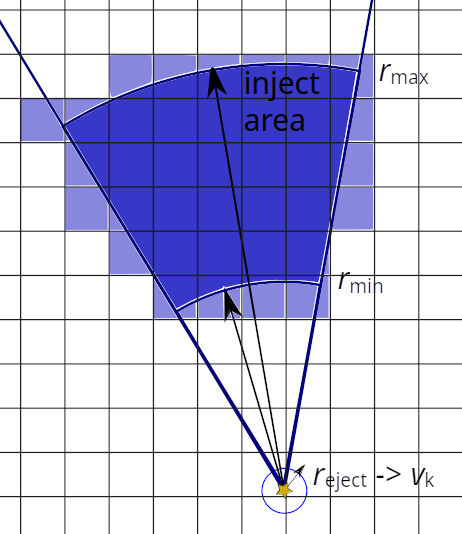Modelling Protostellar Outflows in ISM Simulations
Author: Michael Weis
As already teased by the overview given in the December highlight, one important physical process that affects the Interstellar Medium (ISM) is the feedback that is produced in the protostellar stage of star formation.
A protostar is a star in its earliest evolution stage, in which it is still gathering mass that is typically accreted through a disc from its surrounding molecular cloud (MC). A portion of the magnetic flux permeating the MC gets trapped and transported towards the protostar together with the accreted mass, where it is tangled up by the rotation of the protostar and its accretion disc. The release of the created magnetic tension then launches a significant fraction of the accreted mass along the magnetic field lines, then observable in form of axial protostellar jets.
Since protostellar jets deposit mass, energy, and momentum back into their surroundings, we want be able to incorporate them in our ISM simulations. The jets are not naturally produced in those simulations, since the launch mechanism acts on sub-AU (astronomical unit) scales, which we typically cannot resolve in our simulations. However, we can estimate how the jets produced under certain conditions would look like, which allows us to insert them in form of a subgrid-model, realized by our OutflowFeedback Flash module.
The module works by injecting mass and momentum into the simulation grid in areas around the locations of assumed protostars, as marked by stellar sink particles. Since the sink particles hold information about the mass, angular momentum and rate of change of their accreted contents, we can use this information to determine mass injection rate and jet axis, which is used to directionally focus the injected jet in a prescribed manner.
Furthermore, the model is refined with information from a stellar evolution model connected to our sinks, which provides information e.g. about the radius of our protostar. It also provides a stellar luminosity which is fed back to the simulation grid in form of radiative pressure and internal energy.
Since the accretion process from the inner disc onto the protostar and the resulting jet ejection has been observed to proceed in episodic bursts, the OutflowFeedback module is accompanied by an EpisodicAccretion module which enables us to model that behaviour.

